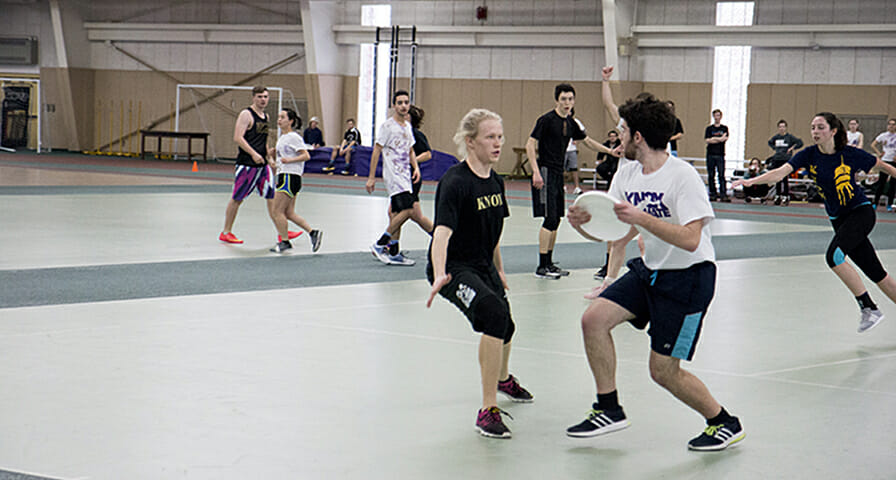A Michigan physical education teacher’s twist to a backyard game has his students maximizing their effort as they study PE heart rate training.
Portland (Mich.) High School PE teacher Andrew Pulling’s frisbee unit has emerged as one of his most popular – and taxing – units for students, despite the frisbee game’s laid-back reputation. Pulling modified a unit based on the backyard target game Kan-Jam to encourage students to exercise at an elevated heart rate.

“The original game is just a back-yard game,” Pulling explained while introducing his “Fun Frisbee Fitness” unit, a standards-based unit selected as a winner of the most recent IHT Spirit Video Challenge. “It’s pretty laid back. We’ve added some agility to it.”
Students pair up and must work on their frisbee-tossing accuracy while racing back and forth between stations. Pulling’s game works by:
- Setting up a target at a specific distance;
- One student throws the frisbee at the target, then sprints to change spots with a partner, teams accrue points by hitting the target with each toss;
- Students complete as many tosses as possible in a 30-second burst; then rest and repeat for as many reps as time allows in class.
In addition to the score of the game, Pulling said students have started focusing on PE heart rate training, ensuring they are meeting his goals for time spent exercising at an elevated rate. Students strive to get their heart rates up during the game, pausing every few rounds to manually measure their heart rate and check their zone. This year, Pulling’s helped reinforce that effort by adding IHT Zone wrist heart rate monitors, enabling students to tie what they are feeling about their effort with an actual heart rate reading.
“It gives students a completely different motivation,” Pulling said. “Rather than the score of a game, rather than who is doing what, now the motivation is really the self-motivation, the self-drive of ‘can I challenge myself to get into my [target heart rate] zone? And, ‘what can I do to keep it there?’”
Pulling’s frisbee unit has grown over the years. At first, he simply worked on the basic skills of the social game, then realized he needed to develop a way to utilize PE heart rate training.
“At first we simply played the original game, and I noticed pretty quickly that, ‘man, there’s no fitness here,’” Pulling admitted.
Two iterations later, Pulling’s created a doubly-effective game that his students look forward to playing while putting in the effort required to reach their target heart rate zone.
“They just eat it up and don’t realize how hard they are working,” he said. “As a teacher I push them a little bit harder because I know they’re enjoying this activity. At the end of it, they’re sweating, they’re laughing, they’re enjoying it.”
Most importantly, the teacher says, the students are reinforcing what they learn about the benefits of heart rate training.
“We do heart rate in a lot of different lessons, so when we get to this unit, they know how to do that and where they should be,” Pulling said. “In designing this, I wanted to give them something they could do with very little equipment, any time and do it with anybody. This is one of those activities.”
Seeking IHT Spirit System information?


